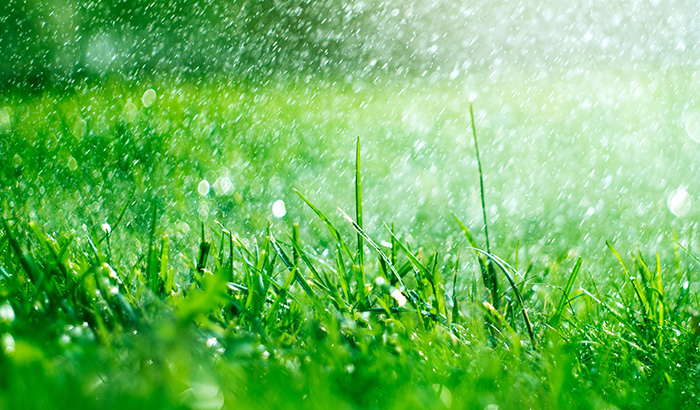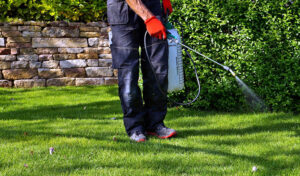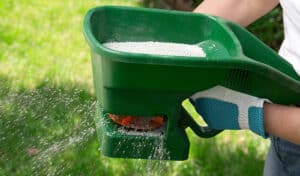Are you a beginner looking for lawn care tips to get started growing a lush lawn?
There’s something undeniably magical about a healthy lawn. It elevates the aesthetic appeal of your home, and a healthy lawn contributes to the environment by providing oxygen, preventing soil erosion, and supporting biodiversity.
Your lawn doubles as a natural air conditioner, absorbing sunlight and cooling its surroundings. Plus, grass filters out pollutants like dust and smoke, purifying the air we breathe. Each blade plays its part in fostering a healthier world.
Starting with lawn care can be daunting, from choosing the right grass and mastering watering to anticipating those first sprouts. Yet, every seasoned gardener once stood in your shoes. Equipped with knowledge, patience, and passion, you can grow a lawn that’s a haven for both you and nature.
As we explore lawn care, remember that every challenge is a step towards growth for you and your lawn.
1. Choosing the Right Type of Grass: Key to a Thriving Lawn
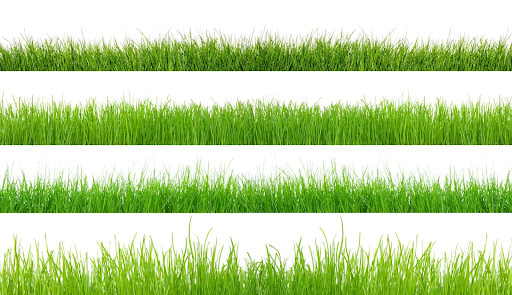
Gardening enthusiasts often say, “It’s not about having a green thumb; it’s about choosing the right plant for the right place.” This wisdom is true when it comes to selecting grass for your lawn.
Understanding Your Local Climate
Knowing your area’s temperature patterns, rainfall frequencies, and seasonal changes will empower you to make informed decisions.
When your grass is harmonious with the climate, it naturally requires less maintenance. It’ll be more resistant to diseases, drought, and pests, leading to a robust and healthy lawn with fewer challenges.
Grass Types & Their Best Climates
- Kentucky Bluegrass: Ideal for the Northern US with its vibrant green shade, it loves cold winters and warm summers.
- Bermuda Grass: It revels in the sun and is perfect for hot climates like the South or Southwest.
- Fescue: Versatile with subspecies, it’s great for cooler climates and transitional zones, tolerating some heat.
- St. Augustine: Suited for warm coastal areas due to its salt resistance.
- Zoysia Grass: Flexible and resilient, it’s a favorite for transitional zones, enduring both heat and some cold.
Soil Testing: Unlocking the 2. Secrets Beneath Your Feet

A painter needs a clean canvas, a writer a blank page, and a gardener? Well, they need just the right soil. But how do we know what our gardens genuinely need? The answer lies beneath our feet, waiting to be discovered with a simple soil test. Let’s dig deeper and unearth the mysteries of soil testing.
Knowing Your Soil’s pH and Nutrient Levels
For a garden to truly flourish, the soil needs the correct balance of pH and nutrients.
pH Levels: Soil pH indicates its acidity or alkalinity. Ideally, plants thrive in a neutral to slightly acidic range of 6.0 to 7.5.
Nutrient Insight: Soil comprises minerals and organic components. A soil test can help measure vital nutrients: nitrogen (leaf growth), phosphorus (roots and flowers), and potassium (plant health).
Soil Testing
Using a clean trowel, collect soil from several different spots in your yard, about 4-6 inches deep. Mix these together in a clean bucket, removing any rocks, roots, or debris.
Choose a Testing Option
- DIY Kits: Found at garden stores, these provide a straightforward insight into pH and essential nutrients. Just follow the included steps.
- Local Extension Services: County agricultural offices frequently offer in-depth soil tests, often with tailored advice for your area.
If adjustments are needed, lime can raise pH (making the soil more alkaline), while sulfur can lower it (making it more acidic). Depending on the nutrient recommendations, you can then decide on the type and amount of fertilizer or organic matter to add.
3. Watering Wisely: Nourishing Your Lawn with Liquid Love
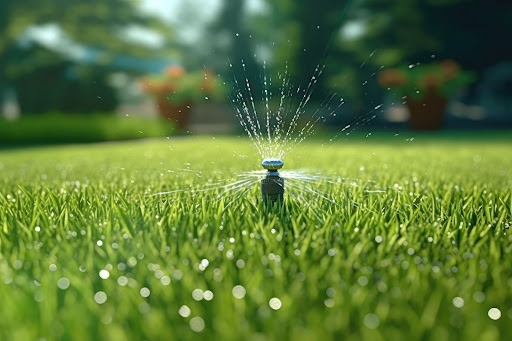
Watering your lawn isn’t just about turning on the hose. Let’s dive into the nuances of watering wisely and ensuring every drop counts!
The Best Times to Quench Your Lawn’s Thirst
- Morning Dew-light: Watering near sunrise is optimal due to cooler air and minimal evaporation, allowing the sun to dry the grass and fend off fungal diseases.
- Evening’s Gentle Caress: If not in the morning, aim for late afternoon, ensuring the grass isn’t wet overnight to prevent disease onset.
The Depth of Drink: Balancing Quantity and Caution
Grass roots can reach several inches deep. Water should reach about 6 inches into the soil to promote deep root growth. Check by inserting a screwdriver or stick; you’re good if it goes in easily post-watering!
While you might think “more water equals a greener lawn,” over-watering can harm it. Too much moisture can harm roots, encourage fungi, and attract pests. Typically, lawns need 1 to 1.5 inches of water weekly from rain or watering.
4. Proper Mowing Techniques: The Art of Giving Your Lawn a Trim
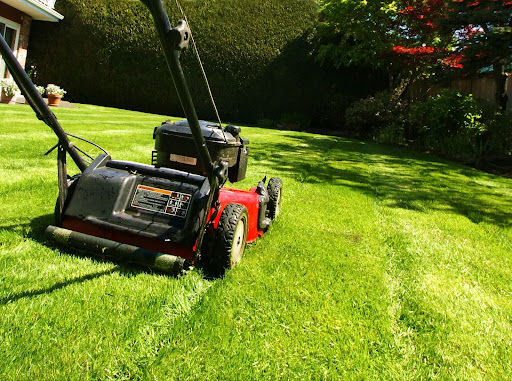
Mowing your lawn is an essential aspect of lawn care that can influence your grass’s health, growth, and appearance. Let’s dive into the art of mowing your lawn and ensure every trim is top-notch!
Tuning into the Right Height: Grass Type Matters
- Kentucky Bluegrass: Best kept at 2.5 to 3.5 inches.
- Bermuda Grass: Thrives when cut between 1 to 2 inches.
- Fescue: A height of 2 to 3 inches keeps it lush.
- St. Augustine: Prefers being a bit taller at 2.5 to 4 inches.
- Zoysia Grass: Looks its best between 1 to 2.5 inches.
The ‘Goldilocks’ Principle: Not Too Short, Not Too Short, Just Right
Grass and its roots share a symbiotic relationship. Taller grass blades develop deeper roots, enabling them to access water and nutrients even in more challenging conditions. If you mow your lawn too short, you limit the grass’s ability to grow robust roots.
Longer grass shades the soil, reducing water evaporation and preventing weed seeds from getting the sunlight they crave. By maintaining an optimal height, you’re beautifying your lawn and strengthening it.
5. Fertilizing Basics: Feeding Your Lawn’s Appetite
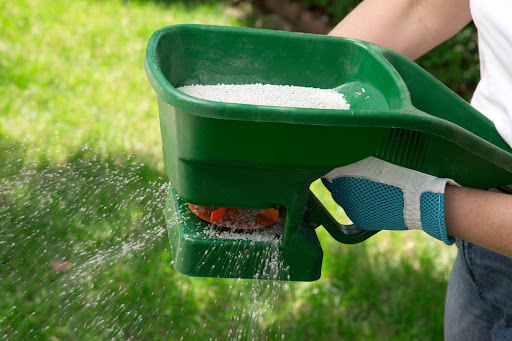
Let’s get into the basics of fertilizing and ensure your lawn gets the nourishment it deserves.
Decoding the Fertilizer Numbers: The Nutrient Trio
When you pick up a fertilizer bag, you’ll usually see three bold numbers, like “10-20-10.” What do they signify?
- First Number – Nitrogen (N): Encourages lush, green growth, acting as plant protein.
- Second Number – Phosphorus (P): Aids root development and boosts flowering. It’s the foundational element.
- Third Number – Potassium (K): Enhances overall plant resilience against diseases, drought, and cold – the plant’s immune booster.
Seasonal Servings
- Spring: A balanced fertilizer helps kick-start growth as your lawn wakes from its winter slumber.
- Early Summer: A nitrogen-rich mix supports lush growth during this active growing phase.
- Late Summer/Fall: Potassium-rich fertilizers strengthen the grass, preparing it for the colder months.
Generally, fertilizing 3-4 times a year is beneficial. However, always follow the specific guidelines on the fertilizer bag and adjust based on your lawn’s needs.
Organic vs. Synthetic Fertilizers: The Great Debate
- Organic Fertilizers: Sourced from plants, animals, or minerals, these provide slow-releasing, long-lasting benefits. They nourish the grass, improve soil quality, and boost beneficial microbes. They’re typically safer for kids, pets, and the environment.
- Synthetic Fertilizers: Lab-produced, they deliver instant nutrients with precise ratios for specific lawn needs. However, they can potentially “burn” the lawn if overused and might not offer the same soil-enhancing benefits as organic options.
6. Weed Control: Guiding Your Lawn Through Its Botanical Battles
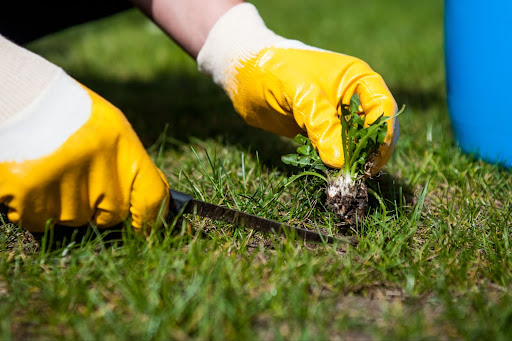
With knowledge and the right strategies, you can prevent and treat these botanical invaders, ensuring that your healthy lawn remains the star of the show!
Spotting the Culprits: Identifying Common Lawn Weeds
- Dandelions: Recognizable by their yellow flowers, they can overshadow desired grasses, even though some enjoy their aesthetics and edibility.
- Crabgrass: A summer weed that spreads quickly, forming dense mats that can take over lawns swiftly.
- Clover: A low-lying perennial with round leaves, usually in groups of three or four, with white to pink blooms.
- Plantain (Broadleaf and Buckhorn): Distinct with broad, oval leaves and tall seed stalks unrelated to the fruit.
Laying the Groundwork: Preventative Measures and Treatments
- Pre-Emergent Herbicides: Used in early spring to stop weed seeds from sprouting, especially effective for annuals like crabgrass.
- Post-Emergent Herbicides: Target weeds already grown; best applied when weeds are young and thriving.
- Hand-Pulling: Traditional yet effective for sizable isolated weeds. Remember to remove the full root.
- Corn Gluten Meal: A natural seed germination inhibitor which also enriches the soil with nitrogen.
- Vinegar Solution: Its acetic acid can naturally kill weeds but might harm grass. Apply carefully.
- Mowing High: Taller grass shades soil, deterring weed seed growth.
- Biological Control: Beneficial creatures like nematodes can help manage weeds at their early stages.
7. Pest and Disease Management: Guarding Your Lawn’s Well-being
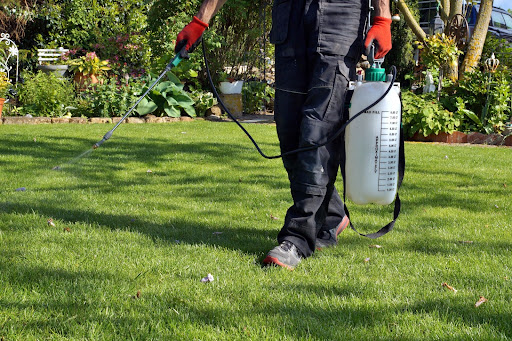
Getting rid of pests and preventing disease are vital to thriving lawns.
Common Lawn Pests and Diseases
- Grubs: Beetle larvae that eat grass roots, causing brown, spongy patches.
- Chinch Bugs: Tiny pests that drain grass sap, leading to yellow-brown areas.
- Fungal Diseases: Conditions like “Brown Patch” and “Dollar Spot” that create unique patterns. Thriving in moisture, they can spread fast.
- Moss: Not a disease, but it occupies areas where grass struggles, especially in damp shade.
Effective Prevention & Treatment:
Aeration: Enhances soil health and can hinder pests like grubs.
Beneficial Nematodes: These natural predators control various pests without harming the lawn.
Act Fast: Address issues promptly, using appropriate organic or chemical treatments. Always follow label guidelines.
Summit Lawn is Here to Help!
Navigating the world of lawn care can be intricate, but with the right expertise, any patch of green can be transformed into a verdant paradise. For those in Utah County, the answer to all your lawn and pest control needs might be closer than you think.
With a decade of experience and a commitment to excellence, Summit Lawn & Pest Control stands out as a beacon of quality and reliability. Our product formulations and dedicated team ensure your lawn isn’t just good, but the best in the neighborhood.
So, if you’re in Orem or surrounding areas and need top-tier lawn care or pest extermination services, consider Summit Lawn & Pest Control. Call 801-473-9926 for a quote, or contact us to see how we can help you grow the lawn you’ve always wanted.


